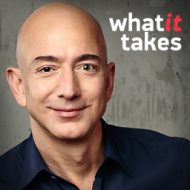I knew that if I failed, I would regret that, but I knew the one thing I might regret is not trying.
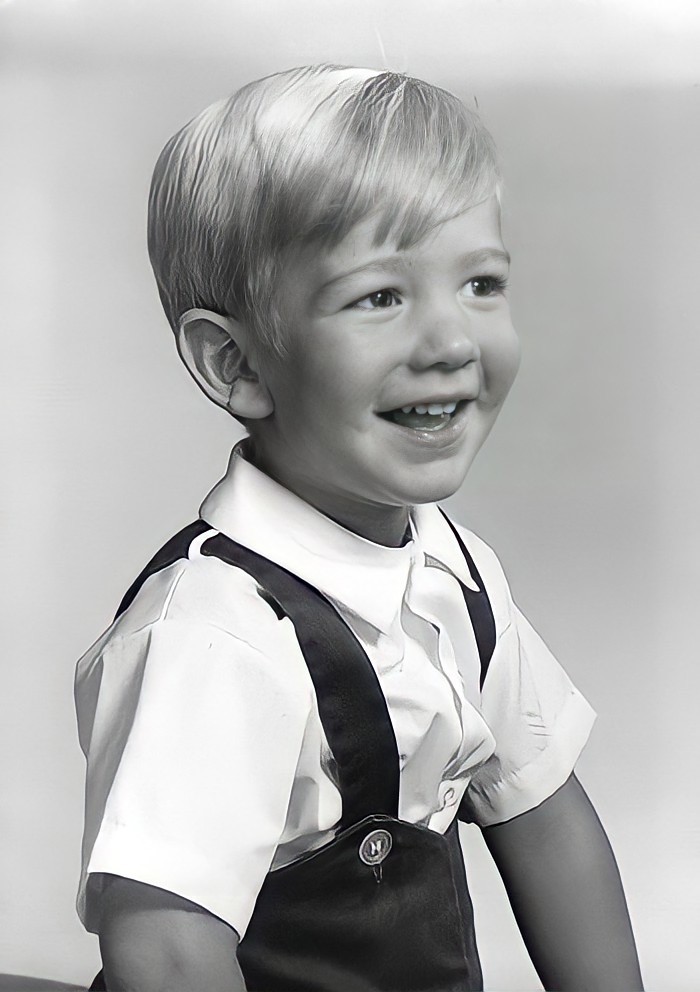
Jeffrey P. Bezos was born in Albuquerque, New Mexico. His mother was still in her teens, and her marriage to his father lasted little more than a year. She remarried when Jeffrey was four. Jeffrey’s stepfather, Mike Bezos, was born in Cuba; he escaped to the United States alone at age 15, and worked his way through the University of Albuquerque. When he married Jeffrey’s mother, the family moved to Houston, where Mike Bezos became an engineer for Exxon. Jeffrey’s maternal ancestors were early settlers in Texas, and over the generations had acquired a 25,000-acre ranch at Cotulla. Jeffrey’s grandfather was a regional director of the Atomic Energy Commission in Albuquerque. He retired early to the family ranch, where Jeffrey spent most of the summers of his youth, working with his grandfather at the enormously varied tasks essential to the operation.
From an early age, Jeffrey displayed a striking mechanical aptitude. Even as a toddler, he asserted himself by dismantling his crib with a screwdriver. He also developed intense and varied scientific interests, rigging an electric alarm to keep his younger siblings out of his room and converting his parents’ garage into a laboratory for his science projects. When he was a teenager, the family moved to Miami, Florida. In high school in Miami, Jeffrey first fell in love with computers. An outstanding student, he was valedictorian of his class. He entered Princeton University planning to study physics, but soon returned to his love of computers, and graduated with a degree in computer science and electrical engineering.
After graduation, Jeff Bezos found employment on Wall Street, where computer science was increasingly in demand to study market trends. He went to work at Fitel, a start-up company that was building a network to conduct international trade. He stayed in the finance realm with Bankers Trust, rising to a vice presidency. At D. E. Shaw, a firm specializing in the application of computer science to the stock market, Bezos was hired as much for his overall talent as for any particular assignment. While working at Shaw, Jeff met MacKenzie Tuttle, also a Princeton graduate. They began dating and were married in 1993. Bezos rose quickly at Shaw, becoming a senior vice president, and was looking forward to a bright career in finance when he made a discovery that changed his life — and the course of business history.

The Internet was originally created by the Defense Department to keep its computer networks connected during an emergency, such as natural catastrophe or enemy attack. Over the years, it was adopted by government and academic researchers to exchange data and messages, but as late as 1994, there was still no Internet commerce to speak of. One day that spring, Jeffrey Bezos observed that Internet usage was increasing by 2,300 percent a year. He saw an opportunity for a new sphere of business, and immediately began considering the possibilities. In typically methodical fashion, Bezos reviewed the top 20 mail order businesses, and asked himself which could be conducted more efficiently over the Internet than by traditional means. Books were the commodity for which no comprehensive mail order catalogue existed, because any such catalogue would be too big to mail — perfect for the Internet, which could share a vast database with a virtually limitless number of people.
He flew to Los Angeles the very next day to attend the American Booksellers’ Convention and learn everything he could about the book business. He found that the major book wholesalers had already compiled electronic lists of their inventory. All that was needed was a single location on the Internet, where the book-buying public could search the available stock and place orders directly. Bezos’s employers weren’t prepared to proceed with such a venture, and Bezos knew the only way to seize the opportunity was to go into business for himself. It would mean sacrificing a secure position in New York, but he and his wife, Mackenzie, decided to make the leap.
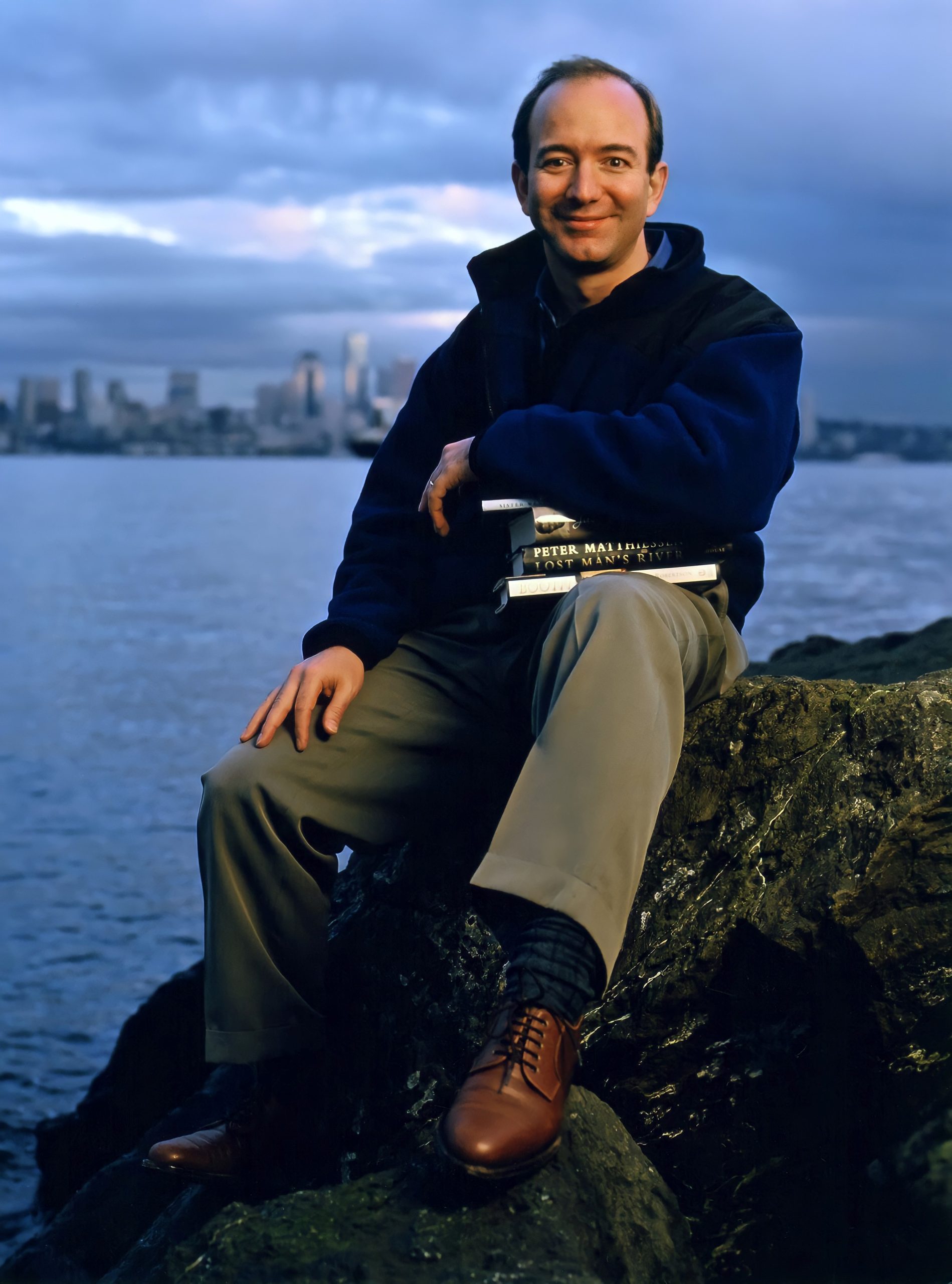
Jeff and Mackenzie flew to Texas on Independence Day weekend and picked up a 1988 Chevy Blazer (a gift from Mike Bezos) to make the drive to Seattle, where they would have ready access to the book wholesaler Ingram, and to the pool of computer talent Jeff would need for his enterprise. Mackenzie drove while Jeff typed a business plan. The company would be called Amazon, for the seemingly endless South American river with its numberless branches.

They set up shop in a two-bedroom house, with extension cords running to the garage. Jeff set up three Sun microstations on tables he’d made out of doors from Home Depot for less than $60 each. When the test site was up and running, Jeff asked 300 friends and acquaintances to test it. The code worked seamlessly across different computer platforms. On July 16, 1995, Bezos opened his site to the world, and told his 300 beta testers to spread the word. In 30 days, with no press, Amazon had sold books in all 50 states and 45 foreign countries. By September, it had sales of $20,000 a week. Bezos and his team continued improving the site, introducing such unheard-of features as one-click shopping, customer reviews, and e-mail order verification.

The business grew faster than Bezos or anyone else had ever imagined. When the company went public in 1997, skeptics wondered if an Internet-based start-up bookseller could maintain its position once traditional retail heavyweights like Barnes and Noble or Borders entered the Internet picture. Two years later, the market value of shares in Amazon was greater than that of its two biggest retail competitors combined, and Borders was striking a deal for Amazon to handle its Internet traffic. Jeff had told his original investors there was a 70 percent chance they would lose their entire investment, but his parents signed on for $300,000, a substantial portion of their life savings. “We weren’t betting on the Internet,” his mother has said. “We were betting on Jeff.” By the end of the decade, as six percent owners of Amazon, they were billionaires. For several years, as much as a third of the shares in the company were held by members of the Bezos family.
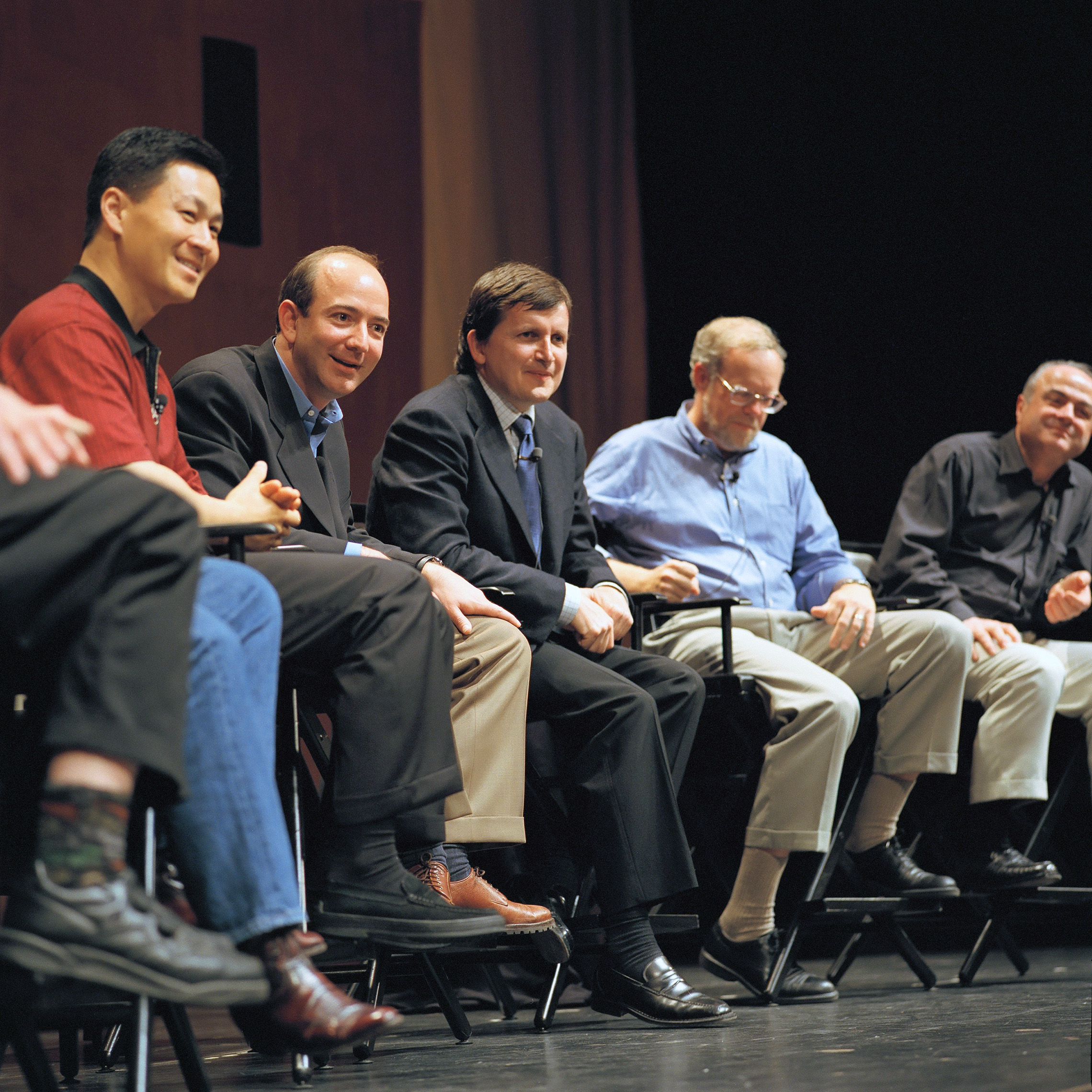
From the beginning, Bezos sought to increase market share as quickly as possible, at the expense of profits. When he disclosed his intention to go from being “Earth’s biggest bookstore” to “Earth’s biggest anything store,” skeptics thought Amazon was growing too big too fast, but a few analysts called it “one of the smartest strategies in business history.” Through each round of expansion, Jeff Bezos continually emphasized the “Six Core Values: customer obsession, ownership, bias for action, frugality, high hiring bar and innovation.” “Our vision,” he said, “is the world’s most customer-centric company. The place where people come to find and discover anything they might want to buy online.” Amazon moved into music CDs, videos, toys, electronics and more. When the Internet’s stock market bubble burst, Amazon re-structured, and while other dot.com start-ups evaporated, Amazon was posting profits.
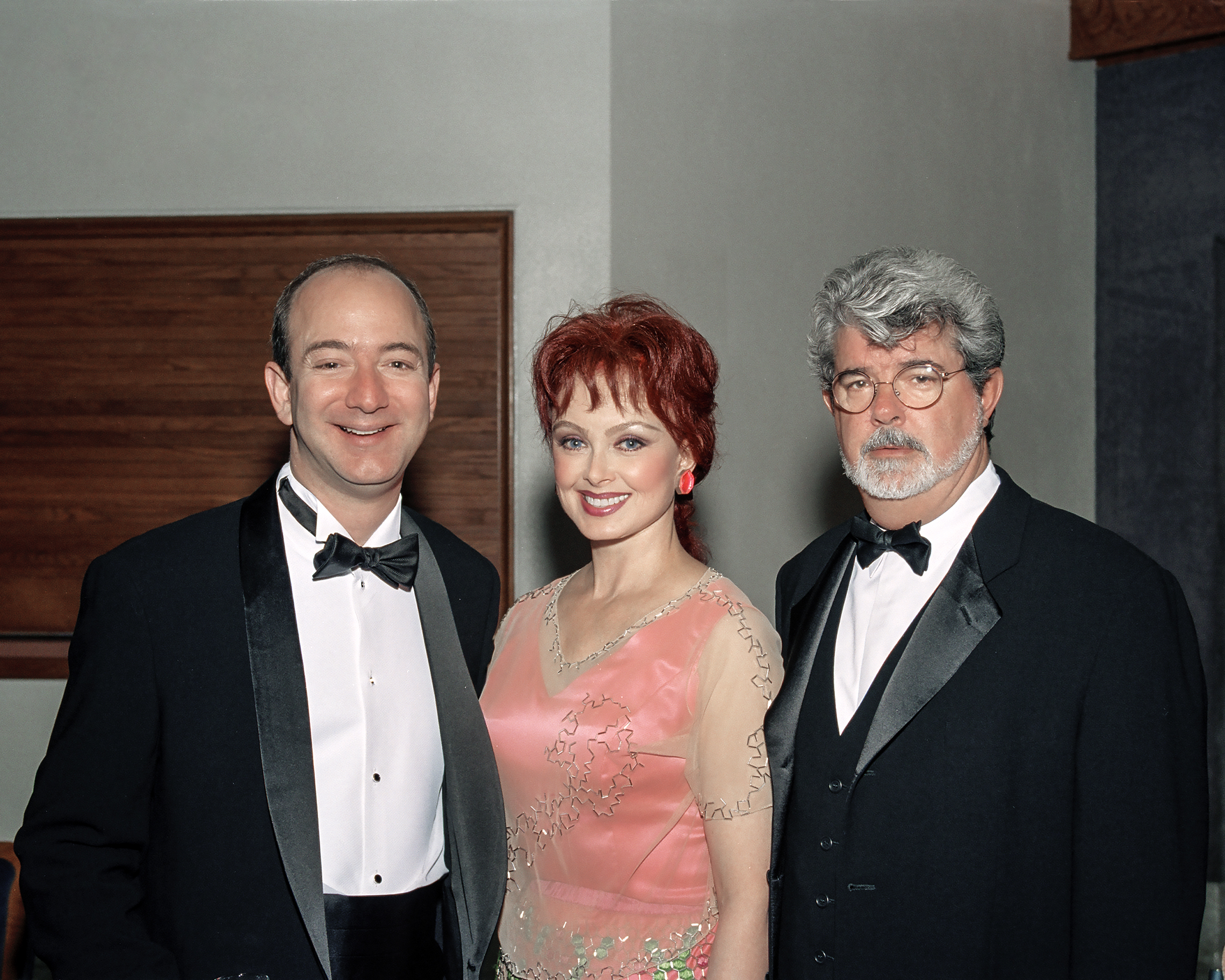
In October 2002, the firm added clothing sales to its line-up, through partnerships with hundreds of retailers, including The Gap, Nordstrom, and Land’s End. Amazon shares its expertise in customer service and online order fulfillment with other vendors through co-branded sites, such as those with Borders and Toys ‘R Us, and through its Amazon Services subsidiary. In September 2003, Amazon announced the formation of A9, a new venture aimed at developing a commercial search engine that focuses on e-commerce websites. At the same time, Amazon launched an online sporting goods store, offering 3,000 different brand names. Amazon.com ended 2015 with net revenue of $107 billion. Amazon has become America’s largest online retailer, with more than four times the sales of its nearest rival.
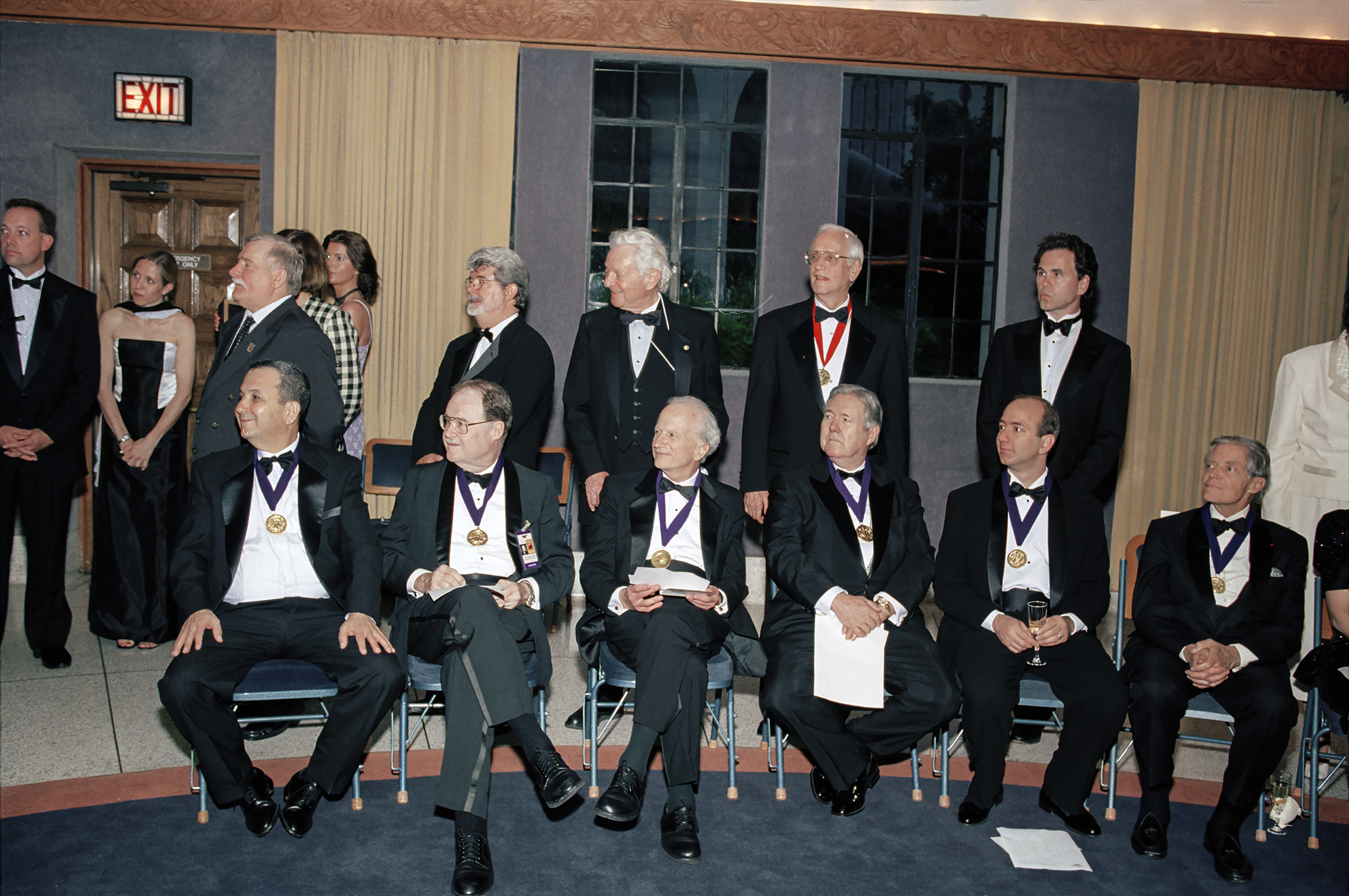
The success of Amazon has allowed Bezos to explore his lifelong interest in space travel. In 2004, he founded an aerospace company, Blue Origin, to develop new technology for spaceflight, with the ultimate goal of establishing an enduring human presence beyond Earth. From its 26-acre research campus outside Seattle and a private rocket launching facility in West Texas, Blue Origin is testing New Shepard, a multi-passenger rocket-propelled vehicle designed to travel to and from suborbital space at competitive prices. New Shepard will allow researchers to conduct more frequent experiments in a microgravity environment, as well as providing the general public with an opportunity to experience spaceflight. In its mission statement, Blue Origin identifies its ultimate goal as the establishment of an enduring human presence in outer space.

As exciting as that prospect may be, Jeff Bezos has had more terrestrial innovations on his mind as well. In 2007, Amazon introduced a handheld electronic reading device — the Kindle. The device used “E Ink” technology to render text in a print-like appearance, without the eyestrain associated with television and computer screens. The font size was adjustable for further ease in reading, and, unlike earlier electronic reading devices, the Kindle incorporated wireless Internet connectivity, enabling the reader to purchase, download and read complete books and other documents anywhere, anytime. Hundreds of books can be stored on the Kindle at a time. Many classics can be downloaded free of charge; all new titles were initially priced at $9.99.

In the year the Kindle was introduced, Amazon’s sales increased by 38 percent, and its profits more than doubled. In 2010, Amazon signed a controversial deal with The Wylie Agency, in which Wylie gave Amazon the digital rights to the works of many of the authors it represents, bypassing the original publishers altogether. This, and Amazon’s practice of selling e-books at a price far below that of the same title in hardcover, angered several publishers, as well as some authors, who see their royalty rates threatened. But it appears that the advent of electronic reading devices is increasing the overall sales of books, which can only benefit readers and authors alike. By mid-2010, Kindle and e-book sales had reached $2.38 billion, and Amazon’s sales of e-books topped its sales in hardcover. With e-book sales increasing by 200 percent a year, Bezos predicted that e-books would overtake paperbacks and become the company’s bestselling format within a year.

With the introduction of the Kindle, Amazon quickly captured 95 percent of the U.S. market for books in electronic form — e-books. The first major challenge to the Kindle’s supremacy in the e-book market came in 2010, when Apple introduced its iPad tablet computer, which was also designed for use as an electronic reading device. Bezos responded aggressively, cutting the Kindle’s retail price and adding new features.
In 2011, Amazon introduced the Kindle Fire, a mini tablet computer with a color touch screen, to compete directly with the iPad. Amazon also took the handheld e-reader to a new level of comfort and convenience with the Kindle Paperwhite, an illuminated touchscreen device that can be read comfortably in a darkened room. A Whispersync feature enables users with multiple devices to mark their place in one book and resume reading at the same place in another. Having already revolutionized the way the world buys books, Jeff Bezos is now transforming the way we read them as well.

Amazon now boasts a host of diversified subsidiaries, including AmazonLocal and LivingSocial. Business customers can employ Amazon’s online infrastructure technology through Amazon Web Services. In 2012, Bezos launched Amazon Studios, crowdsourcing the development of feature films and television shows. Amazon plans to present the television programs through an online video service, the feature films in brick-and-mortar theaters. The company’s share price increased 30 percent in 2012 alone, tenfold over the previous six-year period. Fortune magazine named Bezos its 2012 “Businessperson of the Year.”
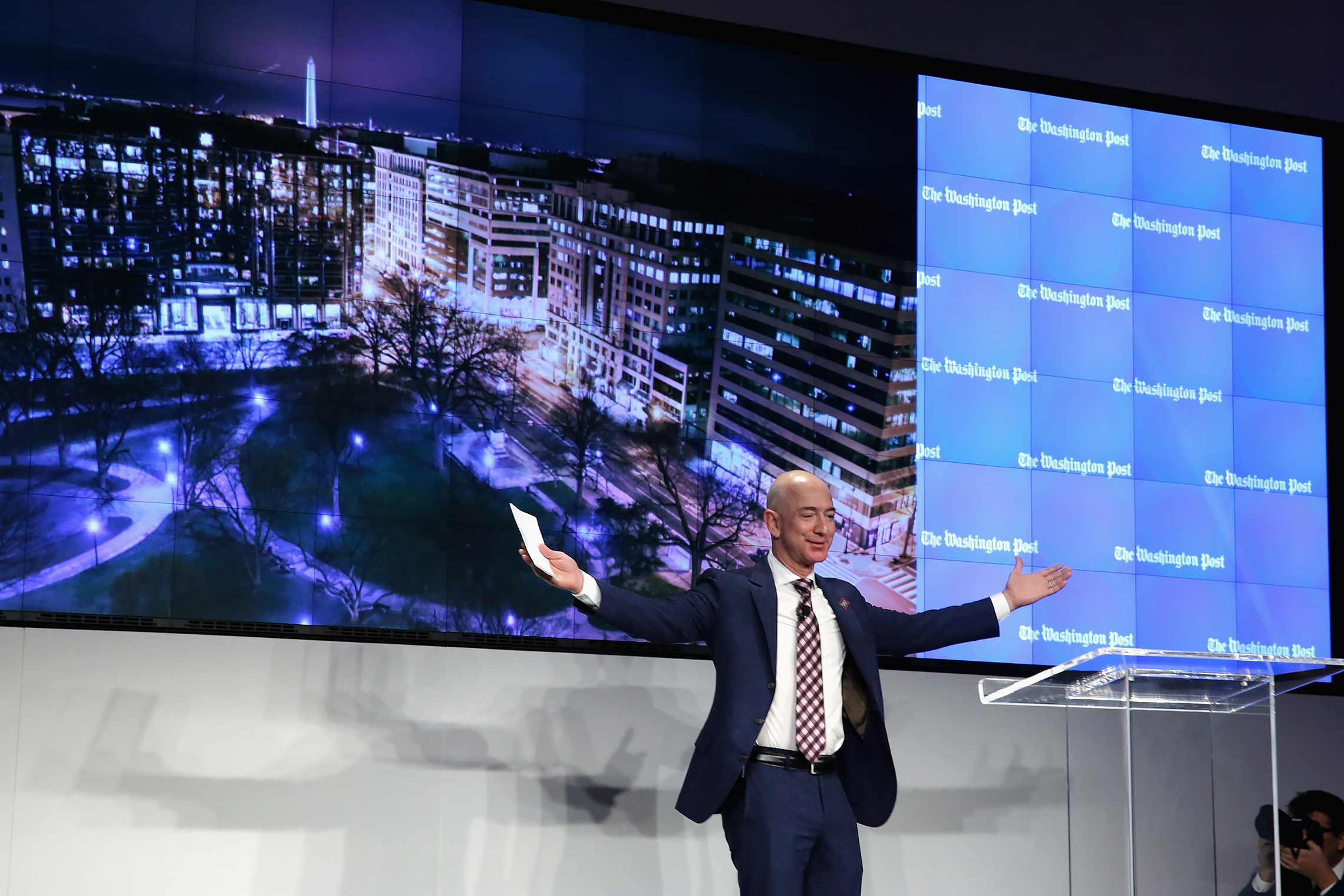
In 2013, Jeff Bezos purchased the newspaper division of The Washington Post Company for $250 million. In addition to The Washington Post, the leading daily newspaper in the nation’s capital, the sale included a number of smaller local newspapers in the Washington, D.C. area. Bezos made the purchase as principal of a privately held company, rather than on behalf of Amazon. It was the first time in 80 years that the newspaper had passed from the control of the Graham family, descendants of Eugene Meyer, who bought the paper in 1933. At the time of the sale, Bezos expressed respect and admiration for the Graham family’s stewardship of the Post and announced his intention to retain the existing management.
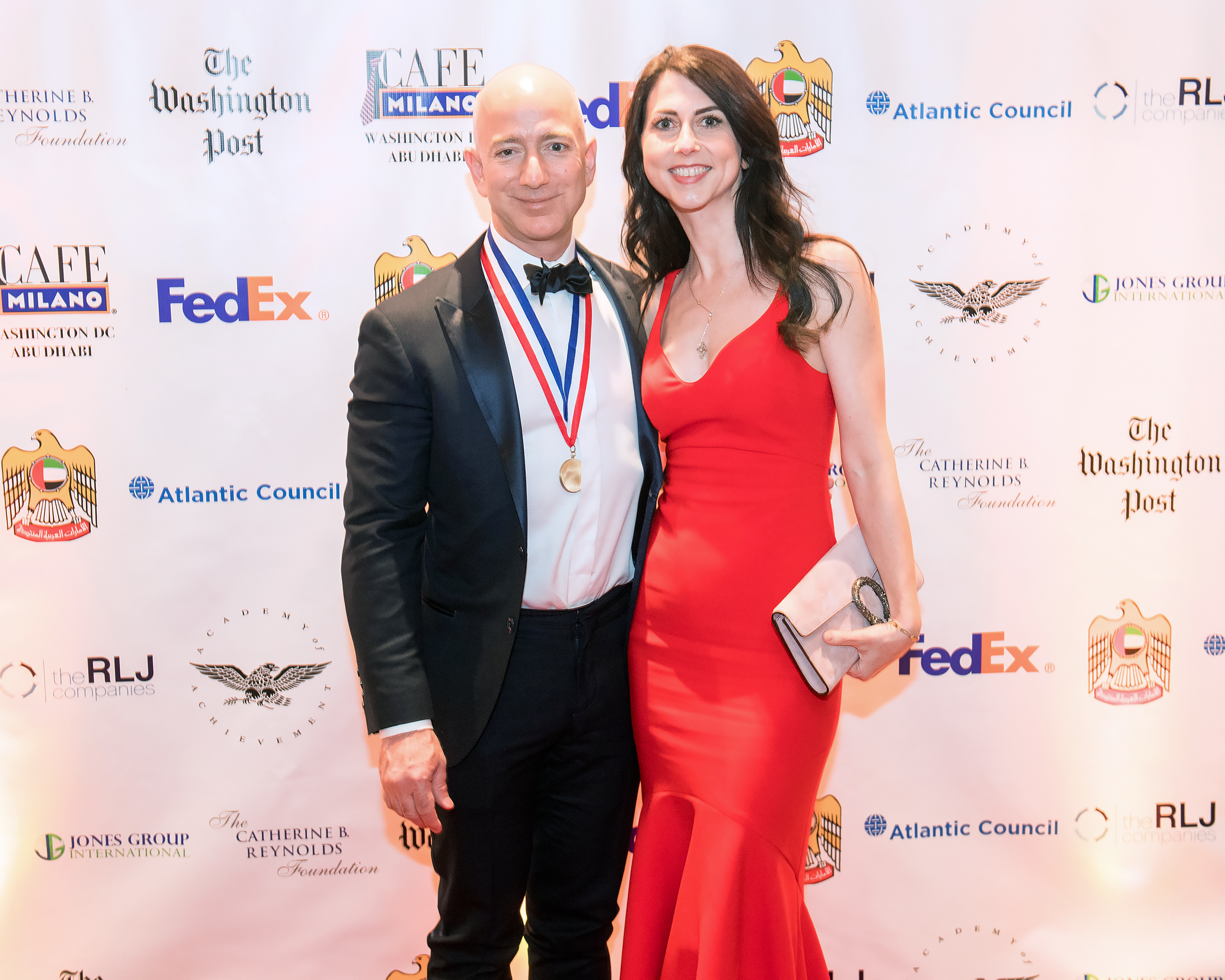
Early in 2017, Bloomberg News estimated that Jeff Bezos had a net worth of $75.6 billion, making him the second wealthiest person in the world, second only to Microsoft founder Bill Gates. That summer, the rapid rise in the value of Amazon shares boosted the value of the founder’s stake by over $1 billion in a single day. Jeff and MacKenzie Bezos became noted philanthropists in the Seattle area. “Giving away money takes as much attention as building a successful company,” Jeff Bezos has said.

In 2017, Amazon purchased national grocery retailer Whole Foods for $13.7 billion. While Whole Foods stores will continue to sell high-end delicacies and organic produce, they will also serve as delivery locations for Amazon’s online retail business, extending the company’s reach into ever more areas of the economy. As the world entered the 2017 holiday shopping season, Amazon’s stock price soared, raising the net worth of founder Jeff Bezos and making him the wealthiest person in the world. His net worth continued to grow, and in July 2018 was estimated by the Bloomberg Billionaires’ Index to be over $150 billion, roughly $55 billion greater than that of anyone else on Earth.
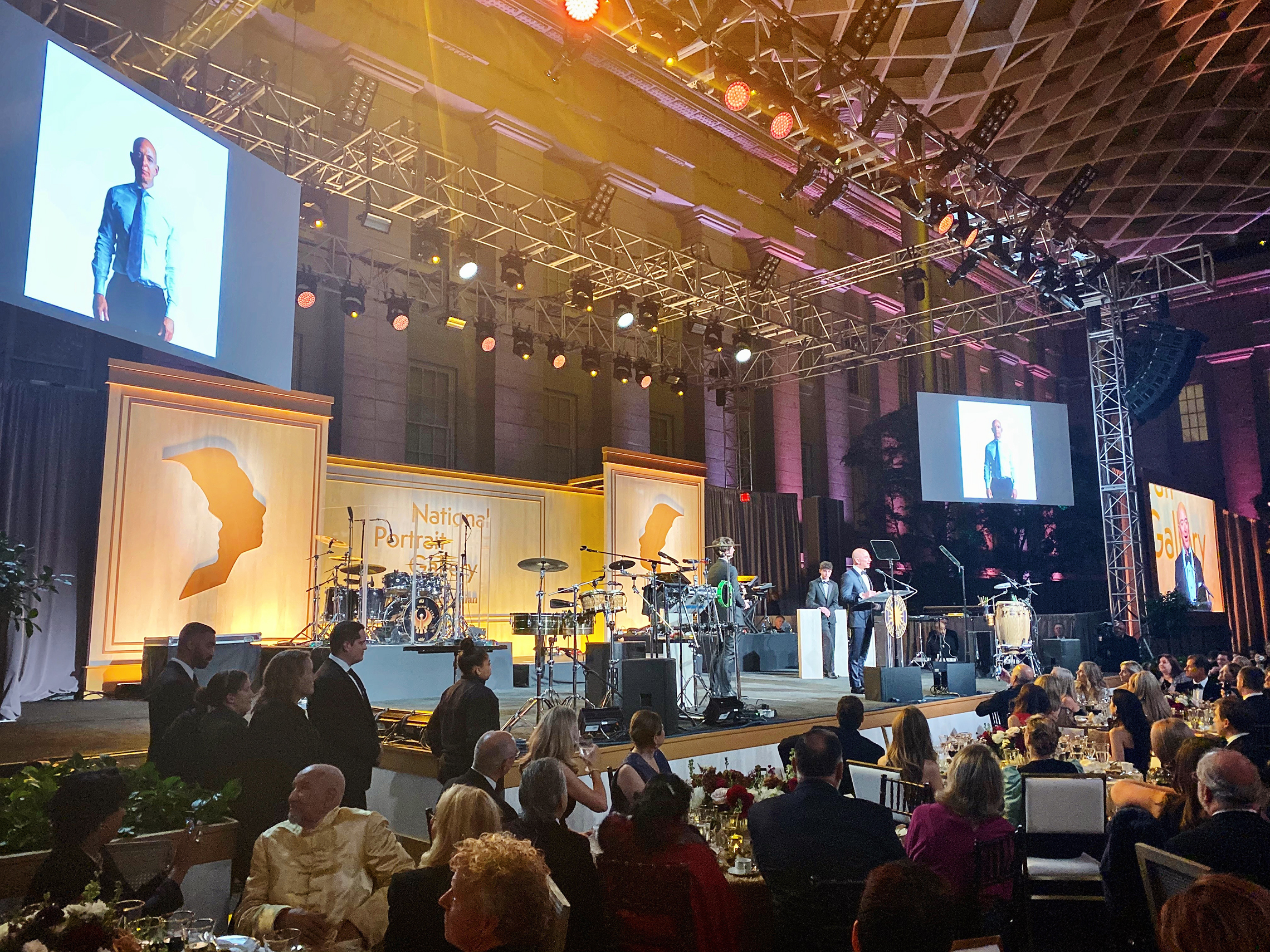
In addition to their philanthropic activities, MacKenzie Bezos has pursued a separate career as a novelist, publishing The Testing of Luther Albright in 2005 and Traps in 2013. Together, Jeff and MacKenzie Bezos founded the homeless charity Day One Fund in 2018. In January 2019, the couple announced plans to divorce. Over the course of their 25-year marriage, Jeff and MacKenzie Bezos raised four children and maintained homes in Medina, Washington and in Beverly Hills, Manhattan, Washington, D.C., and Van Horn, Texas.
In the first months of 2020, a global pandemic rocked the world’s economy, but as people all over the world sheltered at home, the demand for Amazon’s online services exploded and the company’s stock price surged along with it. By August 2020, his personal stake in the company gave Jeff Bezos an estimated net worth of more than $200 billion, making him by far the wealthiest individual in history.

At the peak of this success, Jeff Bezos announced his decision to relinquish the role of CEO at Amazon, effective as of summer 2021. He continues to serve as Executive Chairman of the global retail, communications and media empire he has built. He is now focusing more of his energy on his aerospace initiative, Blue Origin. In 2021, he announced that he will be one of the crew on board Blue Origin’s first manned space flight. On July 14, 2021, the Smithsonian Institution announced it would receive a $200 million donation from Jeff Bezos — the largest gift to the Smithsonian since the Institution’s founding gift from James Smithson in 1846. A $70 million portion of the donation will support the renovation of the National Air and Space Museum, and $130 million will launch a new education center at the museum.

On May 19, 2023, a team led by Jeff Bezos’ Blue Origin won a coveted $3.4 billion NASA contract to build a 50-foot-tall spacecraft to fly astronauts to and from the moon’s surface. The mission, Artemis V, is scheduled to launch in 2029 and is another critical piece of NASA’s Artemis program to send astronauts back to the moon as part of an effort to explore its south pole region.
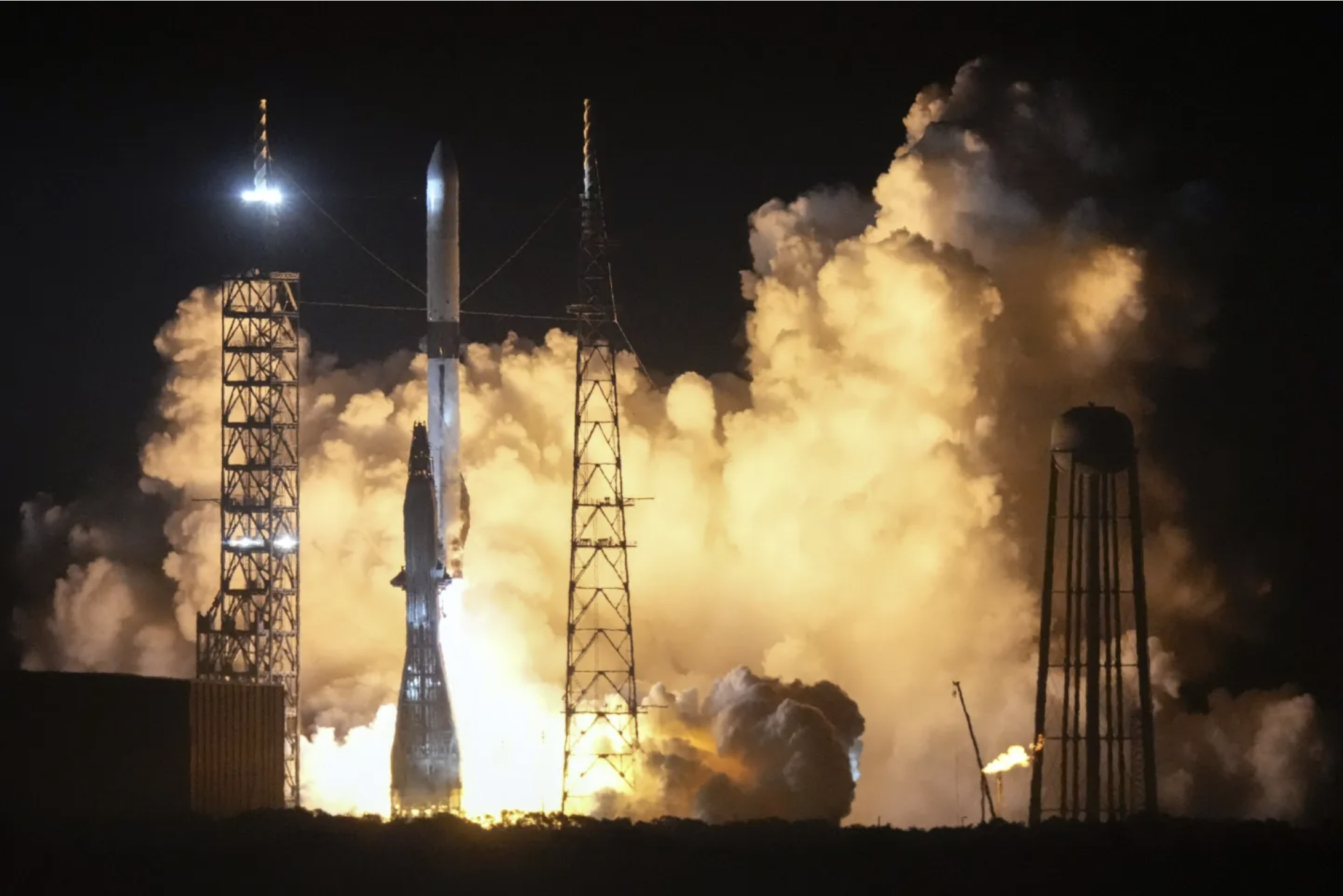
On May 22, 2023, Jeff Bezos and his partner, Lauren Sánchez, announced their engagement. The couple, who made their relationship public in 2019, have largely kept their personal lives under wraps, mostly appearing together at various public events. Sánchez, a former broadcast journalist turned philanthropist, and Bezos have been working together on their philanthropic endeavors, strategically distributing Bezos’s vast wealth to a variety of causes. In 2024, Jeff Bezos ranked second on Bloomberg’s wealth index with a net worth of $233 billion.

“I’m going to go do this crazy thing. I’m going to start this company selling books online.”
In 1994, Jeff Bezos was a 30-year-old vice president of a New York investment firm, newly married, with a secure and prosperous future ahead of him. He decided to give it all up and drive to Seattle with his wife, in a used car, to start a business in their garage. He was betting his own savings — and his parents’ and friends’ — on a totally untried notion: that people would buy books through a little-known network of computers called the Internet.
Jeff Bezos was convinced that this global network, primarily the domain of academics and government scientists, could become a vibrant new venue for commerce, with the right product and the right plan. Almost overnight, the company Bezos started, Amazon.com, changed the book-buying habits of a nation. Bezos and his investors found their shares in the company worth billions.
As the company’s capitalization soared, Bezos embarked on a risky strategy of expansion, forgoing immediate profits to secure an ever-larger share of the Internet market, not only in books, but in music, videos, electronics, toys and clothing. At the turn of the 21st century, the Internet bubble burst, and fortunes seemingly made overnight literally vanished. Yet Amazon flowed on like its mighty namesake, still expanding, but also showing profits, while other promising start-ups faded from the scene. Once-daunting competitors had become grateful partners. By 2018, the growth in Amazon’s stock price had made its founder and principal shareholder the wealthiest man in history. The vision of Jeff Bezos had prevailed, and the world of commerce had changed forever.
When did you get the idea to start Amazon? Was there a moment of inspiration?
Jeff Bezos: The wake-up call was finding this startling statistic that web usage in the spring of 1994 was growing at 2,300 percent a year. You know, things just don’t grow that fast. It’s highly unusual, and that started me about thinking, “What kind of business plan might make sense in the context of that growth?”
You couldn’t have been the only one to see that growth statistic.
Jeff Bezos: No. In fact, not only was I not the only one, but a lot of people saw it much earlier.

Not everyone has been able to realize that potential the way you have. What do you think enabled you to see what you saw and to act on it?
Jeff Bezos: I think there are a couple of things. One of the things everybody should realize is that any time a start-up company turns into a substantial company over the years, there was a lot of luck involved. There are a lot of entrepreneurs. There are a lot of people who are very smart, very hardworking, very few ever have the planetary alignment that leads to a tiny little company growing into something substantial. So that requires not only a lot of planning, a lot of hard work, a big team of people who are all dedicated, but it also requires that not only the planets align, but that you get a few galaxies in there aligning, too. That’s certainly what happened to us.
Our timing was good, our choice of product categories — books — was a very good choice. And we did a lot of analysis on that to pick that category as the first best category for e-commerce online, but there were no guarantees that that was a good category. At the time we launched this business it wasn’t even crystal clear that the technology would improve fast enough that ordinary people — non-computer people — would even want to bother with this technology. So that was good luck. So there are a whole bunch of things that have to sort of align to make it work.
Here you were, sitting in New York City in a very good job, a lucrative position with a future. You go home and you say to your wife you want to throw all that over and get in the car and go to Seattle. What possessed you to do that? What was her reaction? What is the role of risk taking?
Jeff Bezos: I went to my boss and said to him, “You know, I’m going to go do this crazy thing and I’m going to start this company selling books online.” This was something that I had already been talking to him about in a sort of more general context, but then he said, “Let’s go on a walk.” And, we went on a two-hour walk in Central Park in New York City, and the conclusion of that was this: he said, “You know, this actually sounds like a really good idea to me, but it sounds like it would be a better idea for somebody who didn’t already have a good job.” He convinced me to think about it for 48 hours before making a final decision. So, I went away and was trying to find the right framework in which to make that kind of big decision. I had already talked to my wife about this, and she was very supportive and said, “Look, you know you can count me in 100 percent, whatever you want to do.” It’s true she had married this fairly stable guy in a stable career path, and now he wanted to go do this crazy thing, but she was 100 percent supportive. So, it really was a decision that I had to make for myself, and the framework I found which made the decision incredibly easy was what I called — which only a nerd would call — a “regret minimization framework.” So, I wanted to project myself forward to age 80 and say, “Okay, now I’m looking back on my life. I want to have minimized the number of regrets I have.” I knew that when I was 80 I was not going to regret having tried this. I was not going to regret trying to participate in this thing called the Internet that I thought was going to be a really big deal. I knew that if I failed I wouldn’t regret that, but I knew the one thing I might regret is not ever having tried. I knew that that would haunt me every day, and so, when I thought about it that way, it was an incredibly easy decision. And, I think that’s very good. If you can project yourself out to age 80 and sort of think, “What will I think at that time?” it gets you away from some of the daily pieces of confusion. You know, I left this Wall Street firm in the middle of the year. When you do that, you walk away from your annual bonus. That’s the kind of thing that in the short-term can confuse you, but if you think about the long-term then you can really make good life decisions that you won’t regret later.
Most regrets, by the way, are acts of omission and not commission. If you do bad things, if you go murder somebody, that would be bad and that would be an act of commission that you would regret. But most everyday, ordinary non-murderers, when they’re 80 years old, their big regrets are omissions.
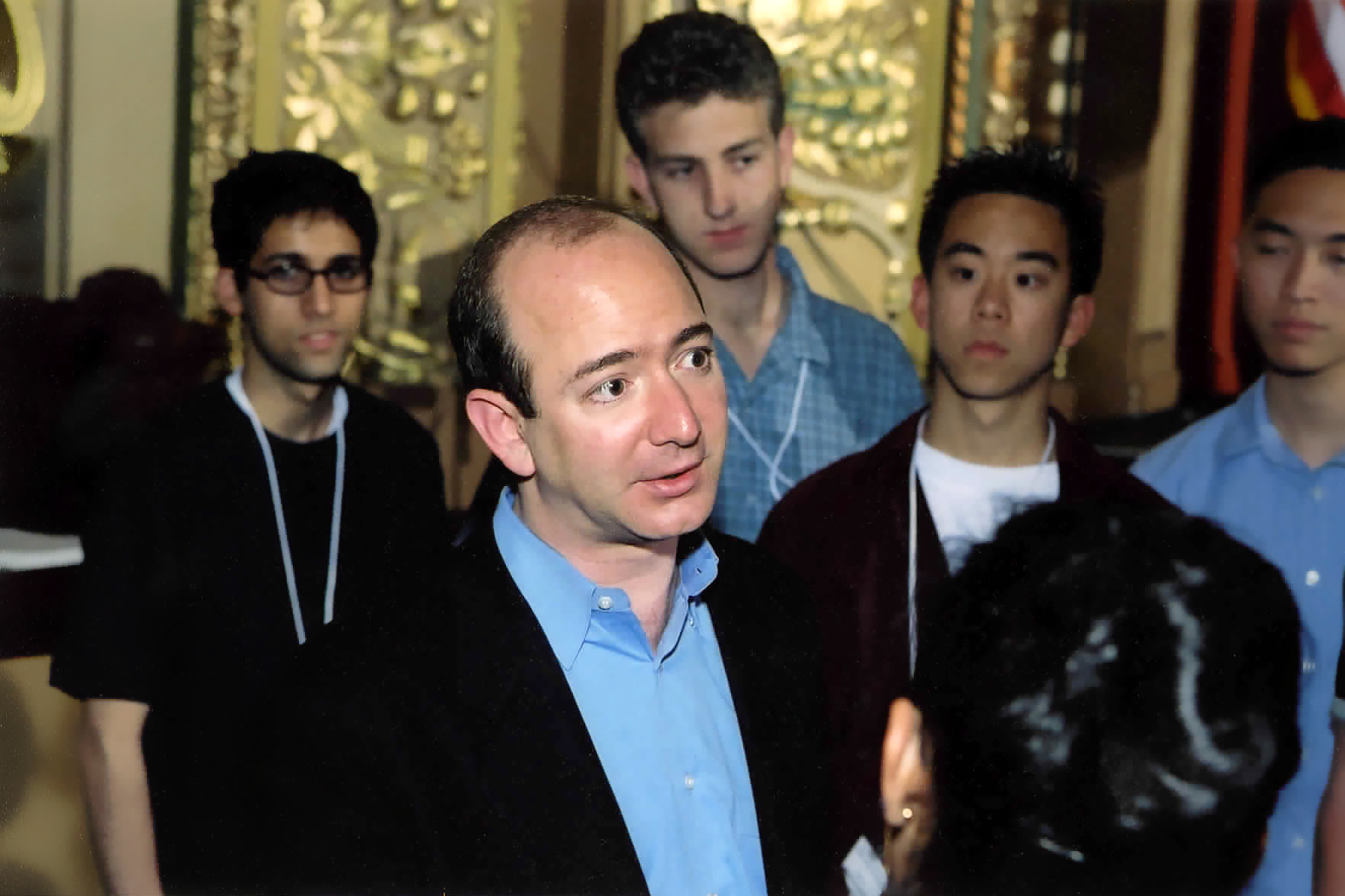
When you showed up in Seattle, you had left your job, you’d left any regrets you might have behind you. How do you get something like Amazon.com started? What did you have to do?
Jeff Bezos: That blank sheet of paper stage is one of the hardest stages, and one of the reasons it’s hard is because at that stage there’s nobody counting on you but yourself. Today it’s easy because we’ve got millions of customers counting on us, and thousands of investors counting on us, and thousands of employees all counting on each other. In that beginning stage it’s really just you, and you can quit any time. Nobody is going to care, so you set about doing the simple things first.
So, you want to start a company. Well, the first thing you do is you should write a business plan, and so I did that. I wrote about a 30-page business plan. I wrote a first draft. In fact, I wrote the first draft on the car trip from the East Coast to the West Coast. And, that is very helpful. You know the business plan won’t survive its first encounters with reality. It will always be different. The reality will never be the plan, but the discipline of writing the plan forces you to think through some of the issues and to get sort of mentally comfortable in the space. Then you start to understand, if you push on this knob, this will move over here and so on. So, that’s the first step.

We tried to get a lot of the little housekeeping details done even before we arrived in Seattle. I called a friend who lived in Seattle and asked if he could recommend an attorney. He recommended his divorce lawyer, but that’s who we used. It was a general practitioner, a sort of small sole practitioner. He incorporated the company. He asked me on the cell phone what name would you like the company incorporated under. I said, “Cadabra, as in abra cadabra.” And he said, “Cadaver?” I knew then that was not going to be a good name. We went ahead and incorporated under that name. We changed it about three months later.
I stopped in San Francisco and interviewed vice presidents of engineering, because that was going to be an important long lead time item. We needed to build the technology that would run the store, and found the person who turned out to be the most important person ever in the history of Amazon.com on that trip. A guy named Shel Kaphan, who built all of our early systems. He had help from others, but he was the architect, he engineered them, and just did a fantastic job. So writing the business plan, the initial hiring, getting the company incorporated, all these are simple, almost pedestrian tasks, but that’s how you start, one step at a time.
Were investors knocking at your door?
Jeff Bezos: Oh no.
The first initial start-up capital for Amazon.com came primarily from my parents, and they invested a large fraction of their life savings in what became Amazon.com. And you know, that was a very bold and trusting thing for them to do because they didn’t know. My dad’s first question was, “What’s the Internet?” Okay. So he wasn’t making a bet on this company or this concept. He was making a bet on his son, as was my mother. So, I told them that I thought there was a 70 percent chance that they would lose their whole investment, which was a few hundred thousand dollars, and they did it anyway. And, you know, I thought I was giving myself triple the normal odds, because really, if you look at the odds of a start-up company succeeding at all, it’s only about ten percent. Here I was, giving myself a 30 percent chance.
There are so many things that can go wrong. When we launched that store in July of 1995, we were shocked at the customer response. Literally in the first 30 days we had orders from all 50 states and 45 different countries, and we were woefully unprepared from an operational point of view to handle that kind of volume. In fact, we quickly expanded. We talked to our landlord, and we expanded into a 2,000-square-foot basement warehouse space that had six-foot ceilings. One of our ten employees was six-two; he went around like this the whole time. We were doing our day jobs, which might have been computer programming — all the different things that ten people will do in a tiny start-up company. And then we would spend all afternoon into the wee hours of the morning packing up the orders and shipping them out. I would drive these things to UPS so we could get the last one, and we would wait till the last second. I’d get to UPS and I would sort of bang on the glass door that was closed. They would always take pity on me and sort of open up and let us ship things late.
We had so many orders that we weren’t ready for, that we had no real organization in our distribution center at all. In fact, we were packing on our hands and knees on a hard concrete floor. I remember, just to show you how stupid I can be — my only defense is that it was late. We were packing these things, everybody in the company, and I had this brainstorm as I said to the person next to me, “This packing is killing me! My back hurts, this is killing my knees on this hard cement floor,” and this person said, “Yeah, I know what you mean.” And I said, “You know what we need?” My brilliant insight. “We need knee pads!'” I was very serious, and this person looked at me like I was the stupidest person they’d ever seen. I’m working for this person? This is great. “What we need is packing tables.”
I looked at this person, and I thought that was the smartest idea I had ever heard. The next day we got packing tables, and I think we doubled our productivity. That early stage, by the way of Amazon.com, when we were so unprepared, is probably one of the luckiest things that ever happened to us, because it formed a culture of customer service in every department of the company. Every single person in the company, because we had to work with our hands so close to the customers, making sure those orders went out, really set up a culture that served us well, and that is our goal, to be Earth’s most customer-centric company. In a second round of fundraising, about a year later or so, we raised a million dollars, and I had to talk to about 60 different people. These were angel investors. Venture capitalists were totally uninterested. It wasn’t like what people think of today.
In 1998 and 1999 you could raise $60 million for an Internet idea without a business plan with a single phone call. It was a very different era, but back in 1995 it was very difficult to raise money. And, by the way, it wasn’t more difficult than it had been for the previous 20 years to raise money, it just was sort of normally hard. It’s supposed to be hard to raise a million dollars. So, with a lot of hard work we raised that million dollars from about 20 different angel investors who invested about $50,000 each, and that was the original money that really funded Amazon.com.
Did you ever have any self-doubts, fear of failure?
Jeff Bezos: In a strange way, no. Because remember…
Once you are looking at the odds in a realistic way — it’s very important for entrepreneurs to be realistic — and so if you believe on that first day while you’re writing the business plan that there’s a 70 percent chance that the whole thing will fail, then that kind of relieves the pressure of self-doubt. It’s sort of like, I don’t have any doubt about whether we’re going to fail. That’s the likely outcome. It just is, and to pretend that it’s not will lead you to do strange and unnatural things. So, what you do with those early investment dollars — if you have $300,000 and then you have a million dollars — what you do with those early precious capital resources is you go about systematically trying to eliminate risk. So, you pick whatever you think the biggest problems are, and you try to eliminate them one at a time. That’s how small companies get a little bit bigger, and then a little bit bigger, and a little bit bigger, until finally, at a certain stage, you reach a transition where the company has more control over its future destiny.
When a company is very tiny, it needs a tremendous amount of not only hard work but, as we talked about earlier, luck. As a company gets bigger, it starts to become a little more stable. At a certain point in time the company has a much bigger influence over its future outcome, and it needs a lot less luck, and instead it needs the hard work. At that point there’s a little bit more pressure, because if you fail you have nobody to blame but yourself.

